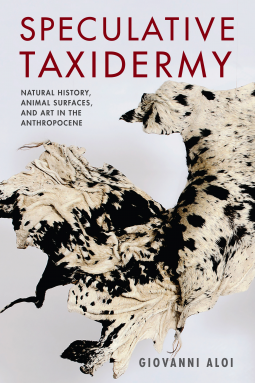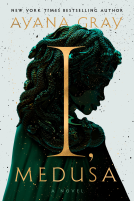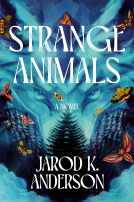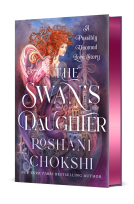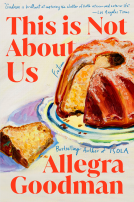Please wait... This may take a moment.
Speculative Taxidermy
Natural History, Animal Surfaces, and Art in the Anthropocene
This title was previously available on NetGalley and is now archived.
Pub Date
Jan 23 2018
| Archive Date
Feb 13 2018
Description
Taxidermy, once the province of natural history and dedicated to the pursuit of lifelike realism, has recently resurfaced in the world of contemporary art, culture, and interior design. In Speculative Taxidermy, Giovanni Aloi offers a comprehensive mapping of the discourses and practices that have enabled the emergence of taxidermy in contemporary art. Drawing on the speculative turn in philosophy and recovering past alternative histories of art and materiality from a biopolitical perspective, Aloi theorizes speculative taxidermy: a powerful interface that unlocks new ethical and political opportunities in human-animal relationships and speaks to how animal representation conveys the urgency of addressing climate change, capitalist exploitation, and mass extinction.
A resolutely nonanthropocentric take on the materiality of one of the most controversial mediums in art, this approach relentlessly questions past and present ideas of human separation from the animal kingdom. It situates taxidermy as a powerful interface between humans and animals, rooted in a shared ontological and physical vulnerability. Carefully considering a select number of key examples including the work of Nandipha Mntambo, Maria Papadimitriou, Mark Dion, Berlinde De Bruyckere, Roni Horn, Oleg Kulik, Steve Bishop, Snæbjörnsdóttir/Wilson, and Cole Swanson, Speculative Taxidermy contextualizes the resilient presence of animal skin in the gallery space as a productive opportunity to rethink ethical and political stances in human-animal relationships.
Taxidermy, once the province of natural history and dedicated to the pursuit of lifelike realism, has recently resurfaced in the world of contemporary art, culture, and interior design. In ...
Description
Taxidermy, once the province of natural history and dedicated to the pursuit of lifelike realism, has recently resurfaced in the world of contemporary art, culture, and interior design. In Speculative Taxidermy, Giovanni Aloi offers a comprehensive mapping of the discourses and practices that have enabled the emergence of taxidermy in contemporary art. Drawing on the speculative turn in philosophy and recovering past alternative histories of art and materiality from a biopolitical perspective, Aloi theorizes speculative taxidermy: a powerful interface that unlocks new ethical and political opportunities in human-animal relationships and speaks to how animal representation conveys the urgency of addressing climate change, capitalist exploitation, and mass extinction.
A resolutely nonanthropocentric take on the materiality of one of the most controversial mediums in art, this approach relentlessly questions past and present ideas of human separation from the animal kingdom. It situates taxidermy as a powerful interface between humans and animals, rooted in a shared ontological and physical vulnerability. Carefully considering a select number of key examples including the work of Nandipha Mntambo, Maria Papadimitriou, Mark Dion, Berlinde De Bruyckere, Roni Horn, Oleg Kulik, Steve Bishop, Snæbjörnsdóttir/Wilson, and Cole Swanson, Speculative Taxidermy contextualizes the resilient presence of animal skin in the gallery space as a productive opportunity to rethink ethical and political stances in human-animal relationships.
A Note From the Publisher
Part of the Critical Life Studies series
with 10 color illustrations not included in the NetGalley files
Part of the Critical Life Studies series
with 10 color illustrations not included in the NetGalley files
Advance Praise
The first volume to focus on animals in a media-based
subset of contemporary art, Speculative Taxidermy offers a lucid and
compelling account of why animals have become serious subjects in art, and with
what consequences for the history of art and biological science. There is no
greater authority on the subject than Aloi.
— Susan McHugh, University of New England
Speculative Taxidermy makes a fascinating
contribution to the nonhuman turn and invites us to find new ways to envisage
the relationships between human and nonhuman animals. It will be a significant
text for ethical and political debates in animal studies and the environmental
humanities.
— Hannah Stark, University of Tasmania
The first volume to focus on animals in a media-based subset of contemporary art, Speculative Taxidermy offers a lucid and compelling account of why animals have become serious subjects in art, and...
Advance Praise
The first volume to focus on animals in a media-based
subset of contemporary art, Speculative Taxidermy offers a lucid and
compelling account of why animals have become serious subjects in art, and with
what consequences for the history of art and biological science. There is no
greater authority on the subject than Aloi.
— Susan McHugh, University of New England
Speculative Taxidermy makes a fascinating
contribution to the nonhuman turn and invites us to find new ways to envisage
the relationships between human and nonhuman animals. It will be a significant
text for ethical and political debates in animal studies and the environmental
humanities.
— Hannah Stark, University of Tasmania
Available Editions
| EDITION |
Other Format |
| ISBN |
9780231180719 |
| PRICE |
$32.00 (USD)
|
| PAGES |
304
|
Additional Information
Available Editions
| EDITION |
Other Format |
| ISBN |
9780231180719 |
| PRICE |
$32.00 (USD)
|
| PAGES |
304
|
Average rating from 5 members
Featured Reviews
 Reviewer 355821
Reviewer 355821
3 stars
3 stars
3 stars
3 stars
3 stars
Though I am certainly not the target audience for this book, I found the history of taxidermy and the writing compelling.
3 stars
3 stars
3 stars
3 stars
3 stars
Readers who liked this book also liked:
I, Medusa
Ayana Gray
General Fiction (Adult), Historical Fiction, Sci Fi & Fantasy
Strange Animals
Jarod K. Anderson
General Fiction (Adult), Sci Fi & Fantasy
